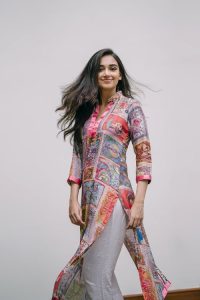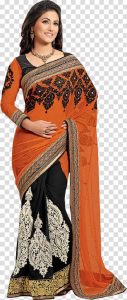What we wear is something beyond material sewn together to secure us, our garments are a signifier of our character and culture. So it’s nothing unexpected that throughout the long term, networks have utilized attire as a way to impart status, celebrate significant occasions, and show solidarity among a lot more things. Here we discuss different clothes around world that are as yet worn, discovering the set of experiences behind specific articles of clothing and the specialty that goes into them.

Shalwar Kameez
Shalwar Kameez
The shalwar kameez is the public dress of Pakistan and is worn by people in each of the Five areas Punjab, Sindh, Balochistan, Khyber Pakhtunkhwa, And Gilgit-Baltistan in the nation and in Azad Kashmir. Shalwar is just like free pants and the shirt is called kameez. Starting around 1982, all authorities working in the secretariat are needed to wear public dress.
Pakistani apparel alludes to the ethnic dress that is commonly worn by individuals in the nation of Pakistan and by individuals of Pakistani beginning. Pakistani garments express the way of life of Pakistan and the socioeconomics of the country.
http://https://www.youtube.com/watch?v=1wqcCg4lCI4
Dress in each provincial culture reflects climate conditions, method of living, and unmistakable style which gives it an exceptional character among all societies.

sari
Sari
The sari (regularly spelled ‘saree’) is one of the cultural clothing around the world particularly in India, Sri Lanka, Pakistan, Bangladesh, and Nepal. However generally worn by ladies in the current style, the sari is a unisex garment. It very well may be a treasure that went down through ages or a simply utilitarian article of clothing worn ordinary.
By and large, the sari has been portrayed as a singular piece of unstitched surface, as often as possible with heavier sections to allow it to wrap precisely. Its line (like a sew) would be woven with a heavier thickness, as would its ‘pallu’ (the regularly adorning end piece).
Today the term has been created to become far-reaching of contemporary materials including cotton, silk, made fiber and that is only the start.

Kimono
Kimono
The word ‘kimono’ signifies ‘a thing to wear’ and has come to indicate the conventional full-length robes worn in Japan. The kimono is worn for significant celebrations and formal events and the convention of the piece of clothing has become inseparable from consideration and great habits.
It’s said that the essential model for the kimono was the kantoi, a one-piece dress without sleeves, which was worn as far back as the third century. Generally, kimonos are sewn the hard way and surprisingly machine-caused kimonos require significant hand-sewing
Kebaya
A kebaya is a conventional pullover dress blend that starts from the court of the Javanese Majapahit Kingdom. It is the public outfit of Indonesia but on the other hand is worn by ladies in Malaysia, Singapore, Brunei, southern Thailand, Cambodia, and the southern piece of the Philippines.
Before 1600, a kebaya was a garment saved distinctly to be worn by illustrious family, blue-bloods, and minor honorability, however, taken on by everybody and in addition to the tip-top. The shirt-like piece of clothing is regularly hazy and can be produced using cotton, velvet, silk, trim, and brocade.

Hanbok
Hanbok
The hanbok in South Korea (or Joseon-oth in North Korea) is the customary Korean dress. It is described by dynamic tones and straight lines without pockets. Albeit the term in a real sense signifies ‘Korean attire’, hanbok generally alludes explicitly to the dress of the Joseon time frame and is worn as semi-formal or formal wear during celebrations and festivities.

Shúkà
Shúkà
Shúkà is the Maa word for sheets customarily worn folded over the body by the Maasai individuals of southern Kenya and northern Tanzania. The sheeted articles of clothing are ordinarily red, now and again blended in with different tones and examples like plaid or blossoms. One-piece articles of clothing known as kanga, a Swahili expression, are normal.
This picture portrays Maasai heroes showing up at a eunoto function, the most requesting test a fighter generally needed to confront – the following and killing of a lion with just a lance to arm him. The lion’s mane hats are worn to the function by these champions to show their prosperity.

Kilt
Kilt
A kilt is a knee-length skirt-like piece of clothing with wrinkles at the back, starting in the traditional dress of Gaelic men and young fellows in the Scottish Highlands. Its first wear was recorded in the sixteenth century as the ‘extraordinary kilt’, and the more modest, more current kilt arose in the eighteenth century.
It’s just since the nineteenth century that the kilt has become related to the more extensive culture of Scotland and all the more comprehensively with Gaelic legacy.
Regularly worn on conventional events and games, kilts are frequently made of woolen fabric in a plaid design. While these days it’s up to the singular wearer which tones and examples they wear, during the nineteenth century, many examples were made and misleadingly connected with Scottish groups, families or establishments who had Scottish legacy.

Agbada
Agbada
The agbada is one of the names for a streaming wide-sleeved robe worn by men in West Africa and portions of North Africa. The name ‘agbada’ comes from the Yoruba language yet is known by different names relying upon the ethnic gathering. The piece of clothing is normally adorned with multifaceted weaving and is worn on uncommon strict or formal events. Numerous abadas are produced using aso-oke, the hand-woven fabric of the Yoruba, a significant ethnic gathering in Nigeria. The texture comes in different tones and examples to mirror the singular style of the wearer.

Bamileke elephant mask dancers
Bamileke Elephant Mask
Cameroon fighters who render extraordinary support of the Bamileke King are qualified to be individuals from the Aka, or ‘Elephant Mask’ society. They dance at the memorial service of the King and at twice-yearly gatherings wearing emotional caps and intricately beaded elephant covers.
These ensembles have a place with the King and show his abundance, power, and advantage. The flood of small ‘pound dabs’ – purported in light of the fact that they were sold by the pound in a boundless scope of shadings and ordinary shapes – were exchanged into Central Africa and empowered the improvement of new themes of sculptural beadwork consolidating representative creature and plant plans.
Huipil
A huipil is the most widely recognized conventional article of clothing worn by native ladies from focal Mexico to Central America. A baggy tunic, generally produced using a few bits of woven texture, a huipil is regularly worn with a blue Morga, a skirt with a weaved crease to go along with it in the center.
Customary huipils, particularly formal ones, are typically made with a texture woven on a backstrap loom and are vigorously embellished with weaving, strips, trim and that’s just the beginning.






23 Comments
I have bookmarked this blog because I discovered it distinctive. I would be really interested to know more information on this. Thanks!
Pretty nice post. I just stumbled upon your weblog and wished to say that I have truly enjoyed browsing your blog posts. After all I抣l be subscribing to your feed and I hope you write again very soon!
Hello there, just became aware of your blog through Google, and found that it is really informative. I am going to watch out for brussels. I will be grateful if you continue this in future. Many people will be benefited from your writing. Cheers!
Well I sincerely liked studying it. This subject provided by you is very useful for correct planning.
I’ve been surfing online greater than 3 hours lately, yet I never discovered any attention-grabbing article like yours. It抯 beautiful price enough for me. Personally, if all site owners and bloggers made good content material as you probably did, the internet will probably be a lot more useful than ever before.
Do you mind if I quote a few of your posts as long as I provide credit and sources back to your site? My blog site is in the very same area of interest as yours and my users would truly benefit from some of the information you provide here. Please let me know if this ok with you. Many thanks!
Thanks, Valued Reader.
Yes, you can use our posts for reference.
I do not even know how I ended up here, but I thought this post was good.
I do not know who you are but definitely you’re going to a famous
blogger if you aren’t already 😉 Cheers!
thank you, valued Reader.
My spouse and I absolutely love your blog
and find nearly all of your post’s to be just what
I’m looking for. can you offer guest writers to write
content available for you? I wouldn’t mind publishing a post or elaborating on a number of the subjects you write concerning
here. Again, awesome web site!
Dear Reader,
Thank you for your valuable comments.
We will, later on, start guest posting on this website. Then, Difinatle your contribution will be appreciated.
Helpful information. Fortunate me I discovered your website accidentally, and I’m stunned why this twist of fate did not took place earlier!
I bookmarked it.
Thank You valued Reader
I am in fact delighted to glance at this web site posts which consists of lots of useful data,
thanks for providing such statistics.
Hi, I wanted to know your price.
Hi! I know this is kinda off topic however I’d figured I’d ask. Would you be interested in exchanging links or maybe guest authoring a blog post or vice-versa? My site covers a lot of the same topics as yours and I believe we could greatly benefit from each other. If you happen to be interested feel free to send me an e-mail. I look forward to hearing from you! Excellent blog by the way!
Thank you for your valued suggestion. I will contact you soon.
Thanks for the sensible critique. Me & my neighbor were just preparing to do some research about this. We got a grab a book from our local library but I think I learned more from this post. I am very glad to see such magnificent info being shared freely out there.
thank you
Good web site! I truly love how it is easy on my eyes and the data are well written. I am wondering how I could be notified whenever a new post has been made. I have subscribed to your RSS feed which must do the trick! Have a nice day!
I think this is among the most significant information for me. And i’m glad reading your article. But wanna remark on some general things, The web site style is great, the articles is really nice : D. Good job, cheers
I believe that is among the such a lot significant information for me. And i’m glad studying your article. But wanna commentary on some basic issues, The site taste is ideal, the articles is truly nice : D. Just right task, cheers
Great web site. A lot of useful information here. I am sending it to some buddies ans additionally sharing in delicious. And naturally, thank you for your effort!